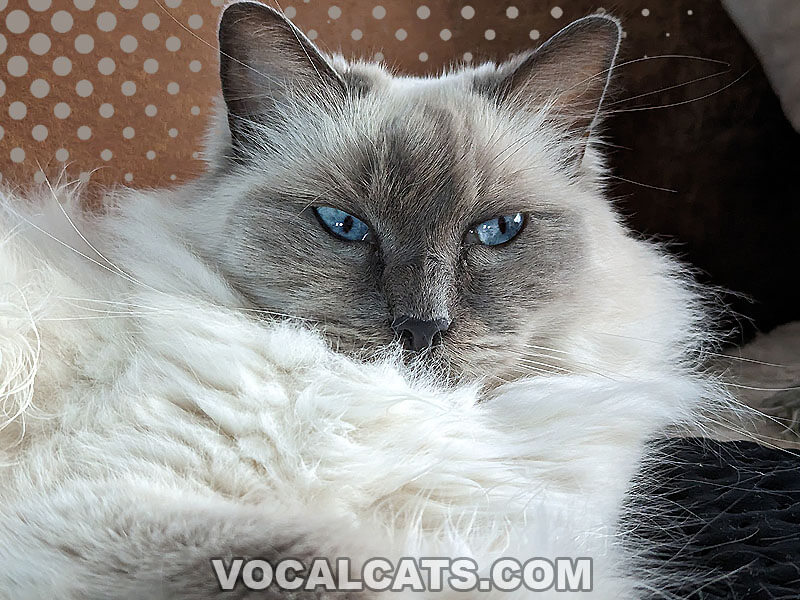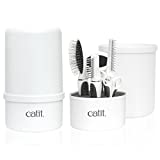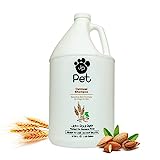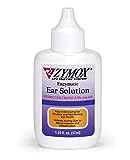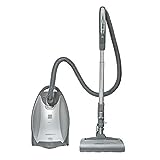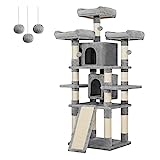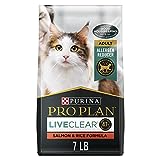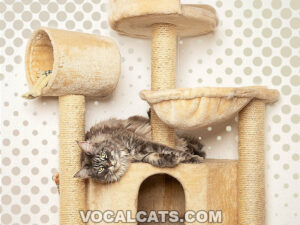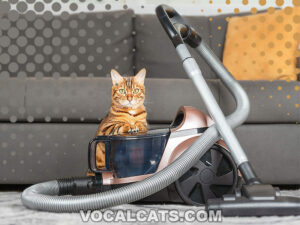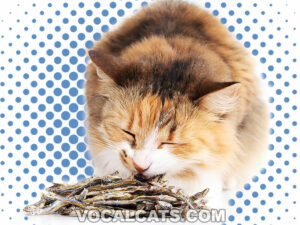Are Ragdoll Cats Hypoallergenic? Ragdolls are not hypoallergenic. Ragdolls qualify as moderate shedders and produce the Fel d 1 protein, a known allergen. That means they’re not ideal for individuals with serious allergy concerns. However, cat lovers should note that no cat is 100% hypoallergenic.
Ragdolls are a pretty popular feline pet choice. If you’re thinking about adopting one and want the lowdown on the breed’s allergenicity, we can help. This article has everything you need: from whether Ragdolls are hypoallergenic to caretaking details.
Additionally, we’ve also covered Ragdoll Cat shedding to ensure you know exactly what to expect after bringing your fur baby home. So, let’s get down to business without wasting any more time!
Contents
- Are Ragdolls Hypoallergenic Cats?
- Are Ragdoll Kittens Hypoallergenic?
- Do Ragdolls Have An Undercoat?
- Are Ragdoll Cats Good For Allergies?
- Are Ragdolls Hypoallergenic?
- How Can You Tell If You Are Allergic To Cats?
- Shedding and Coat Characteristics of Ragdoll Cats
- Ragdoll Dander and Saliva Levels
- Grooming Requirements for Ragdoll Cats
- What Can You Do To Reduce Allergic Reactions To Ragdolls?
- Do Hypoallergenic Cats Exist?
- How To Take Care Of Ragdoll Cats?
- How To Take Care Of Ragdoll Kittens?
- What Are The Best Protein Sources For Your Ragdolls?
- What To Avoid When Choosing Food For Your Ragdoll Cat
- Other Best Food For Ragdoll Cats
- Are Ragamuffin Cats Hypoallergenic?
- Are Siamese Ragdoll Cats Hypoallergenic?
- So, Are Ragdoll Cats Hypoallergenic?
- Related Questions
Are Ragdolls Hypoallergenic Cats?
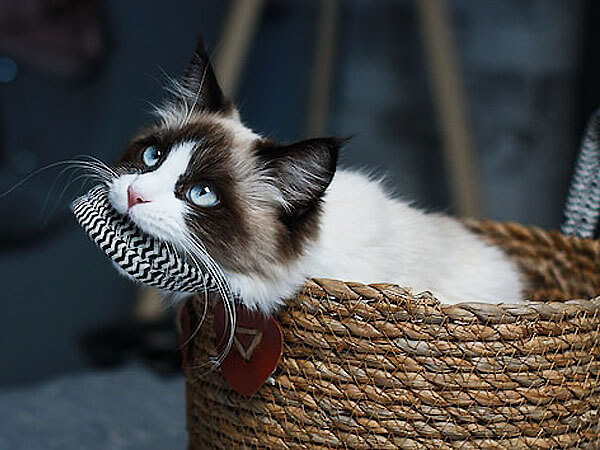
Is a Ragdoll hypoallergenic? No, Ragdolls are not hypoallergenic cats. While Ragdolls aren’t double-coated, they still shed.
Ragdolls also produce the Fel d 1 protein, though not as much as other feline breeds. These reasons are probably behind the misconception that Ragdolls are hypoallergenic.
No need to feel sad, though, because there’s no such thing as a completely hypoallergenic cat.
Even hairless felines can produce an abnormal immune response (aka allergy) due to the protein found in their skin and urine.
Are Ragdoll Kittens Hypoallergenic?
Ragdoll kittens are not hypoallergenic, just like their adult counterparts. They also produce the same allergy-causing proteins, which means they’re just as likely to cause an allergic reaction in sensitive individuals as adult Ragdoll felines.
Do Ragdolls Have An Undercoat?
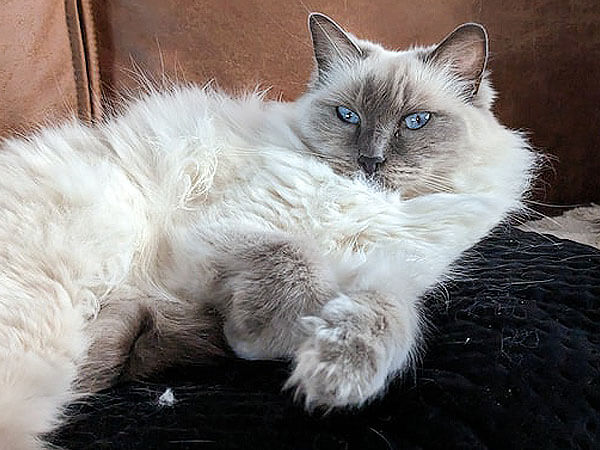
No, Ragdolls do not have an undercoat. Instead, they’re single-coated with silky and long fur, meaning they shed less.
This is one of the reasons why Ragdolls are considered suitable for allergy sufferers.
Are Ragdoll Cats Good For Allergies?
So, are Ragdoll Cats hypoallergenic? Nope. These felines produce allergenic proteins that can provoke allergies in immune-sensitive persons.
However, Ragdolls rank better than breeds such as Persians because they’re not double-coated and shed less.
READ NEXT: Persian Ragdoll Cat (Complete Guide)
If you want to bring home a Ragdoll but suffer from allergies, spending time with the breed is the best course of action.
Even though Ragdolls qualify as Fel d 1 producers, they don’t induce an immune response in everyone.
In short, testing out your immune system is the only way to be sure whether a Ragdoll is a good choice regarding allergies.
If you are okay after you’ve tried out the experiment multiple times, you’re good to go.
Are Ragdolls Hypoallergenic?
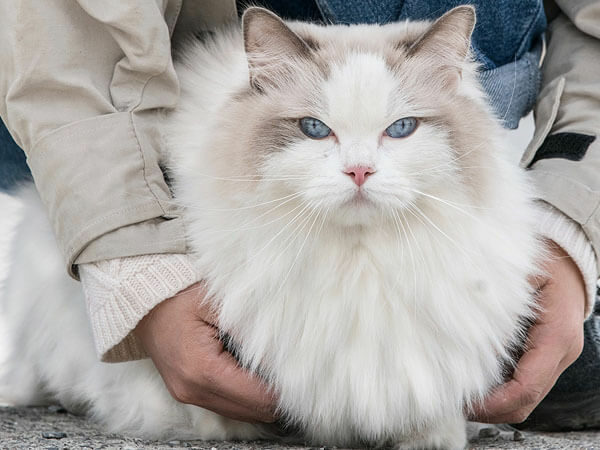
Is there such a thing as a hypoallergenic Ragdoll? The truth is, no feline breed is wholly hypoallergenic. Allergy sufferers prefer Ragdolls over others because they shed less due to not having undercoats.
How Can You Tell If You Are Allergic To Cats?
If you suspect you’re undergoing Ragdoll cat allergies, you should be on the lookout for certain symptoms.
The thing is, allergy symptoms and severity can vary person-to-person, so it’s best to know the full spectrum of such red flags.
Here are some of the more common signs of cat allergies:
Skin Reactions:
- Itchy skin
- Rash
- Hives
- Skin reddening after coming into contact with a feline
Respiratory Problems:
- Watery eyes
- Excessive sneezing
- Stuffy or runny nose
- Coughing
- Shortness of breath
- Feeling a tightness in the chest region
Gastrointestinal Problems:
- Vomiting
- Nausea
Other general allergy symptoms also include headaches and fatigue.
If you experience one or more of these symptoms after spending time with a cat, you may be having an allergic reaction.
At times, these symptoms are mild enough to go unnoticed. While other times the severity of your immune response can be stronger.
The best option in such circumstances is to visit your doctor for a conclusive diagnosis. You may have to take specific tests, such as blood or skin-prick tests.
Your health practitioner will also be able to provide you with medications that will help you cope with the situation. Generally, over-the-counter antihistamines work well for most people.
However, individuals with severe allergic reactions might require something more robust, such as an antihistamine injection.
Shedding and Coat Characteristics of Ragdoll Cats
If you’re looking for info about what you can expect in terms of Ragdoll coat characteristics and shedding intensity, this section can help.
Ragdolls are famous for their loving nature and silky coats. They rank high among moderate shedding cat breeds thanks to not having undercoats. This is why they’re typically preferred over Persians and Maine Coons.
READ ALSO: Maine Coon Ragdoll Mix (Complete Guide)
Here are some features cat lovers should know about Ragdoll coats and shedding cycles.
Fur Type
Ragdolls are single-coat cats with long and silky fur. That means you won’t have to worry about undercoat hairballs floating around your house.
However, these cats still shed. The difference is their hair strands are easier to clean up after, as they’re not as downy as undercoat fur and can easily be spotted on upholstery.
Moderate Shedding
Ragdolls are moderate shedders thanks to their coat type. As far as grooming and cleaning responsibilities go, they don’t require too much effort.
Pet parents should maintain a regular grooming schedule to ensure minimal shedding around the house.
Investing in a vacuum cleaner with a HEPA filter is also a good idea to make cleaning floors, furniture, and other hard-to-reach places easy.
Increased Shedding in Spring and Fall
Felines have shedding cycles during the spring and the fall to help prepare their coat for the upcoming season. Your Ragdoll is going to shed more than usual during these times.
Nonetheless, you can control the amount of shedding by opting for deShedding shampoos, regular brushing, and daily vacuuming to keep allergies at bay.
Ragdoll Dander and Saliva Levels
Ragdoll saliva and dander can contain the Fel d 1 protein, a known allergenic. These and other types of proteins found in feline urine, saliva, and dander can trigger allergic reactions in individuals with sensitive immune systems.
Here’s how.
Saliva
You have a moderate chance of running into allergenic proteins with Ragdoll saliva.
How?
That’s simple. When cats lick to groom themselves, their saliva ends up on their fur.
Once the saliva dries, it breaks down into smaller particles that can become airborne and cause allergen exposure.
Dander
Cat lovers also have a moderate chance of risking allergen exposure with Ragdoll dander. The term dander signifies microscopic specks of skin that cats shed.
These particles contain allergenic proteins that stimulate an immune response in allergy sufferers.
Since dander is tiny and barely weighs anything, it can easily become airborne and spread to various parts of your home.
Grooming Requirements for Ragdoll Cats
Ragdoll fur babies have medium-to-long fur that is soft and silky. While they are known for their beautiful coat, they also require regular grooming to keep them in good condition and to minimize shedding and matted hair.
Here are the grooming requirements of Ragdolls that you need to be aware of.
Brushing
You should brush a Ragdoll three times a week to prevent tangles, mats, and excessive shedding. A soft bristle brush and a wide-tooth comb will help your pet’s fur in silky condition.
Additionally, regular brushing helps keep the fur away from your furniture and clothing.
Bathing
Ragdolls are indoor cats and are very good at keeping themselves clean. They don’t need bathing too often, and a bath once a month will suffice.
Be sure to use a cat-friendly shampoo with organic ingredients to avoid skin concerns.
You can switch to a deShedding shampoo during the shedding cycle to help control the amount of hair fall.
Eye/ear Cleaning
Much like Persian cats, Ragdolls tend to have tear stains around their eyes. This can form a crust if not cleaned and irritate your pet. You’ll have to wipe your feline’s eyes with a damp clean cloth to clean the area.
Besides that, checking your fur baby’s ears once every two weeks for wax buildup or dirt is also recommended.
Ask your vet to suggest an ear-cleaning solution for cats that you can use along with a cotton ball to clean the outer ear.
Claw Trimming
Ragdolls will need their nails trimmed once every two or three weeks. If you allow your pet’s nails to grow too long, they’ll be tempted to scratch furniture to keep their nails short.
Oral Care
Brush your Ragdoll’s teeth regularly with cat-specific toothpaste. This will help avoid mouth odor as well as teeth and gum infections.
What Can You Do To Reduce Allergic Reactions To Ragdolls?
Reducing the chances of Ragdoll allergies is a multi-pronged effort that requires good overall hygiene and minimizing allergen exposure. You can utilize several ways to achieve a Ragdoll cat allergy free zone in your home.
Here are 10 of the best methods to help reduce allergic reactions to Ragdolls.
Grooming and Bathing Your Cat
As we stated earlier, one of the best ways to minimize exposure to allergens is to maintain a regular grooming schedule for your fur baby. This includes brushing and bathing.
Try and brush your Ragdoll cat at least three to four times a week with a wide-toothed comb and soft-bristle brush. Doing so will reduce the amount of hair your pet sheds and thereby lessen the amount of airborne allergens in your house.
Also, bathe your feline monthly to keep its skin clean and healthy. You can use an organic shampoo to help promote skin and fur health, which will also aid in minimalizing shedding.
Increase the time you spend on your pet’s grooming during the spring and fall seasons to control cyclic shedding.
It’s also a good idea to groom your pet in a specified room with light and ventilation to stop the shedding from spreading to other areas of your home.
Cleaning Your Living Space
Cat parents can opt for several cleaning methods when it comes to targeting shedding and dander.
If you’re dealing with hard floors, standard sweeping and mopping can help. But investing in a vacuum meant for multi-surface cleaning is your best bet.
Moreover, if you select a pet-friendly vacuum adept at cleaning pet hair with a HEPA filter, it can help reduce the amount of dander you’re exposed to significantly.
Most vacuums on the market also feature attachments that help keep dust and dander off upholstery and drapes. These are pretty handy during shedding seasons.
Creating Allergy-free Zones
While cat parents don’t like limiting their cats in any way, making allergy-free zones in your home can be a big help if you have a sensitive immune system.
Experts recommend keeping your room, especially your bed, off-limits to your fur baby to keep allergen exposure to a minimum. Since humans spend a big chunk of their lives sleeping, it makes sense to make your room allergy-free.
Not to mention, avoiding dander when you’re motionless and sleeping is impossible, which is why this practice is beneficial for allergy sufferers.
Air Purifiers
Even if your Ragdoll cat is not hypoallergenic, you can still make your home allergy-safe with air purifiers. Air purifiers help improve indoor air quality (IAQ). That means they can tackle dander, dust, pollen, and odors.
You can equip purifiers in the room where you and your fur baby generally hang out to ensure the impact of cat-related allergens is minimal.
Investing in a HEPA filter air purifier is best for anyone with sensitive immune systems because these are designed to capture and trap minuscule allergens.
Wash Fabrics Regularly
Cat hair clings to fabric and isn’t always easy to spot, depending on your pet’s coat color. That’s why it’s a good idea to wash your bedding and curtains regularly.
For that matter, you should also ensure your fur baby’s bedding is clean to avoid pest infestations and skin problems.
Invest in Reusable Lint Rollers
Reusable lint rollers can be life-saving for keeping fur off your clothes and furniture. What’s more, these are designed to be washed and reused, so you don’t have to worry about spending extra cash replenishing your lint rollers supply.
Practice Personal Hygiene
Washing your hands whenever you handle your cat can help reduce exposure to allergens. If washing your hands multiple times is too much of a hassle, you can always keep a hand sanitizer bottle handy if you need a quick clean.
Allergy Wipes
Wondering about how to reduce the dried saliva on your pet’s fur? That’s easy. Get online and type in the words ‘cat allergy wipes.’ These wipes are much like wet wipes. The only difference is you can use these to wipe your pet’s hair clean of lingering allergens.
Referring to an Allergist
If you experience severe allergy symptoms, contacting an allergist is best. These health professionals specialize in diagnosing and treating allergies and offer personalized advice on tackling your immune response to histamines.
Do Hypoallergenic Cats Exist?
Some feline breeds are more hypoallergenic than others. But remember, there’s no such thing as a 100 percent hypoallergenic cat.
Now that we’ve gotten that important disclaimer out of the way let’s focus on 10 of the best cat breeds with hypoallergenic characteristics.
These felines are preferred for individuals with sensitive immune systems because they’re either hairless, have very little hair, or produce smaller quantities of allergenic proteins compared to other breeds.
- Devon Rex
- Cornish Rex
- Siberian Cat
- Balinese Cat
- Russian Blue
- Javanese Cat
- Sphynx Cat
- LaPerm
- Ocicat
- Bengal Cat
RECOMMENDED: Ragdoll Bengal Mix (Complete Guide)
How To Take Care Of Ragdoll Cats?
Ragdolls are laid-back felines and don’t have too many demands. However, like most pets, they require a well-balanced caretaking approach to ensure well-being and overall health. Here’s how.
Grooming
Ragdolls have soft silky fur that requires brushing at least thrice a week. Brushing not only reduces shedding but is also beneficial for promoting skin health.
Aside from that, these fur babies need to be bathed once a month, with eye and ear cleaning and nail trimming at regular intervals.
Another vital aspect of the grooming routine is dental care and teeth brushing.
Diet
Ragdolls require high-quality cat food that provides a well-balanced mix of vitamins and minerals for their nutritional needs. These felines are prone to obesity, so feeding timetables and portion control are a good idea.
Ask your veterinarian which pet food brand is best based on your cat’s health profile.
Finally, you will need to make sure your feline has access to clean and fresh water at all times to stay hydrated.
Exercise
Felines don’t have the same exercise needs as dogs. There’s no specific amount of time related to exercise, but 10 to 15 minutes of high activity generally suffice to burn off your pet’s excess calories and extra energy.
Health
Pet parents bringing home a Ragdoll will also have to keep up with vaccinations, regular vet visits, and spaying/neutering to keep their fur baby healthy.
How To Take Care Of Ragdoll Kittens?
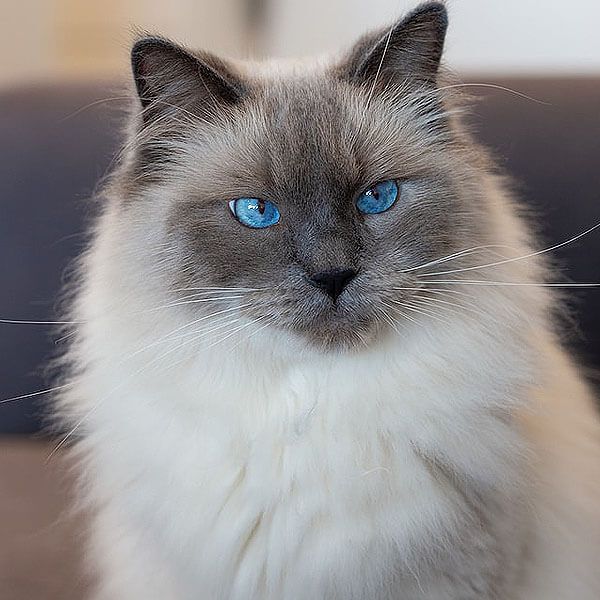
Taking care of Ragdoll kittens includes creating a safe environment, along with ideal nutrition and veterinary care.
Kittens are highly susceptible to picking up diseases, so following their vaccination schedule is paramount.
Next, it’s best to consult your veterinarian about the brand and type of food your Ragdoll kitten needs because the nutritional requirements of kittens vary with age.
Now, let’s focus on creating a warm and safe environment. Investing in bedding, food, and water bowls is an absolute must.
Pet parents also need to kitten-proof their homes and hide any harmful objects that can attract their pets (for example, wires or cables).
What Are The Best Protein Sources For Your Ragdolls?
Cats are obligate carnivores, meaning they need a diet mainly consisting of high-quality protein. If you’re wondering what protein source is best for your Ragdoll, you might want to pay attention here.
Experts often advise poultry meat, such as turkey or chicken, as a protein source for felines because they’re easy to digest, include all the necessary nutrients, and don’t result in food allergies for cats.
If you’re curious about the nutritional breakdown of chicken (and other meats), take a look at the table below.
| Cooked Meat (per 100g) | Protein (g) | Fat (g) | Carbs (g) | Calories (cal) |
| Chicken | 53.4 | 6.2 | 0 | 284 |
| Turkey | 17.7 | 1.6 | 4.2 | 104 |
| Fish | 23.3 | 1.22 | 0 | 112 |
| Lean beef | 35 | 10 | 0 | 250 |
Other protein sources for felines include turkey, fish, and ground lean beef.
While ground lean beef offers the most protein after chicken, it’s also high in fat.
On the other hand, turkey and fish offer plenty of protein, while fish also includes omega-3 fatty acids, which are excellent for coat and skin health.
Choosing a protein source for your fur baby depends primarily on its nutritional needs.
For example, if your feline has put on extra pounds and needs to lose weight, it’s best to stick with fish or turkey, as they offer protein with a low fat content.
What To Avoid When Choosing Food For Your Ragdoll Cat
There are plenty of ingredients pet parents should avoid when choosing suitable food for their Ragdolls.
Here’s a list of the top contenders:
- Artificial additives
- Fillers like corn or soy
- Unnamed protein sources
- Meat by-products
- High sodium levels
- Artificial dyes
- Preservatives
Other Best Food For Ragdoll Cats
Choosing the best cat food for Ragdoll Cats can be confusing for first-timers. If you want to get your hands on the best cat food for Ragdoll cats on the market, we can help.
Scroll on to discover our pick for the best cat food for Ragdolls that’s bound to appeal to even the pickiest of pet parents!
Purina Pro Plan Allergen Reducing Cat Food
A crunchy kibble that’s nutritional and appeals to feline tastes? That’s precisely what Purina Pro Plan LIVECLEAR Allergen Reducing Cat Food can offer cat lovers.
This high-quality product packs a protein punch with a salmon and rice formula, making it suitable for pets with sensitive tummies.
Also, Purina is a well-known and well-reputed cat food brand, meaning you won’t have to worry about the integrity of the ingredients.
Moreover, Liveclear can reduce the amount of Fel d 1 your Ragdoll produces with a key protein from eggs. That makes this cat food product worth a shot for allergy sufferers too.
Are Ragamuffin Cats Hypoallergenic?
Ragamuffins are adorable felines, but they’re not hypoallergenic. The breed boasts a fairly thick fur coat with moderate shedding.
Aside from that, Ragamuffins also produce allergenic proteins that can trigger an immune reaction in allergy-prone individuals.
RECOMMENDED: Persian Ragdoll Cat (Complete Guide)
Are Siamese Ragdoll Cats Hypoallergenic?
Siamese Ragdoll Cats certainly have manageable fur coats, but they’re not hypoallergenic either.
These cats are a hybrid of Ragdolls and Siamese, and since both these breeds produce the Fel d 1 protein, they can trigger an allergic reaction.
So, Are Ragdoll Cats Hypoallergenic?
We’re at the end of our Ragdoll-specific guide and hope we’ve been able to put all your allergy-related queries to rest. Ragdoll cats make great companion cats, but they’re not hypoallergenic.
However, they do shed less than other feline breeds. This makes them score much better in exposure to allergens via shedding department.
If you want to adopt a Ragdoll but have allergy issues, it’s best to spend some time with the breed before making up your mind. This way, you’ll know what to expect from your allergies when you bring your furry friend home.
Related Questions
Ragdolls are not hypoallergenic, but they don’t necessarily trigger allergies in all immune-sensitive individuals. This might be related to varying body chemistry and how people react to allergens. The only way to be sure about how a Ragdoll can affect allergy sufferers is to spend time with one.
Ragdolls are moderate shedders but can experience heavy shedding during spring and fall.
Compared to other medium-to-long-haired cat breeds, Ragdolls are pretty forgiving when it comes to care. They require brushing three times a week and bathing once a month.
Cat breeds like Persians, Himalayans, and Maine Coons aren’t recommended for allergy sufferers due to their thick coats and high shedding.
DISCLAIMER: THIS WEBSITE DOES NOT PROVIDE MEDICAL ADVICE
The information, including but not limited to, text, graphics, images and other material contained on this website are for informational purposes only. No material on this site is intended to be a substitute for professional veterinary advice, diagnosis, or treatment. Always seek the advice of your veterinarian or other qualified health care provider with any questions you may have regarding a medical condition.
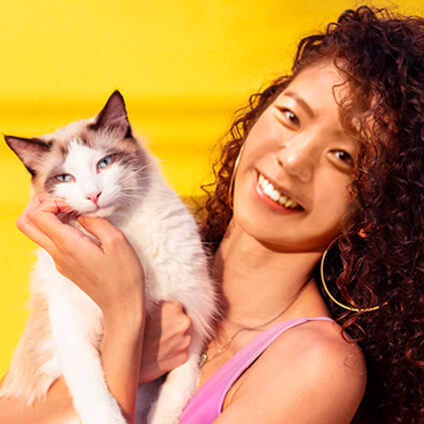
With over five years of specialized experience as an animal writer, my expertise lies in cat nutrition, health, behavior, grooming, and training. I am dedicated to delivering helpful and informative content that caters to the well-being of our feline friends. My primary goal is to empower pet owners with knowledge and ensure our feline companions thrive in health and happiness. In my free time, I love volunteering at local cat rescue centers.
